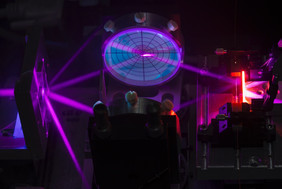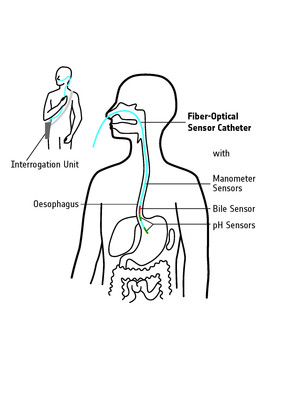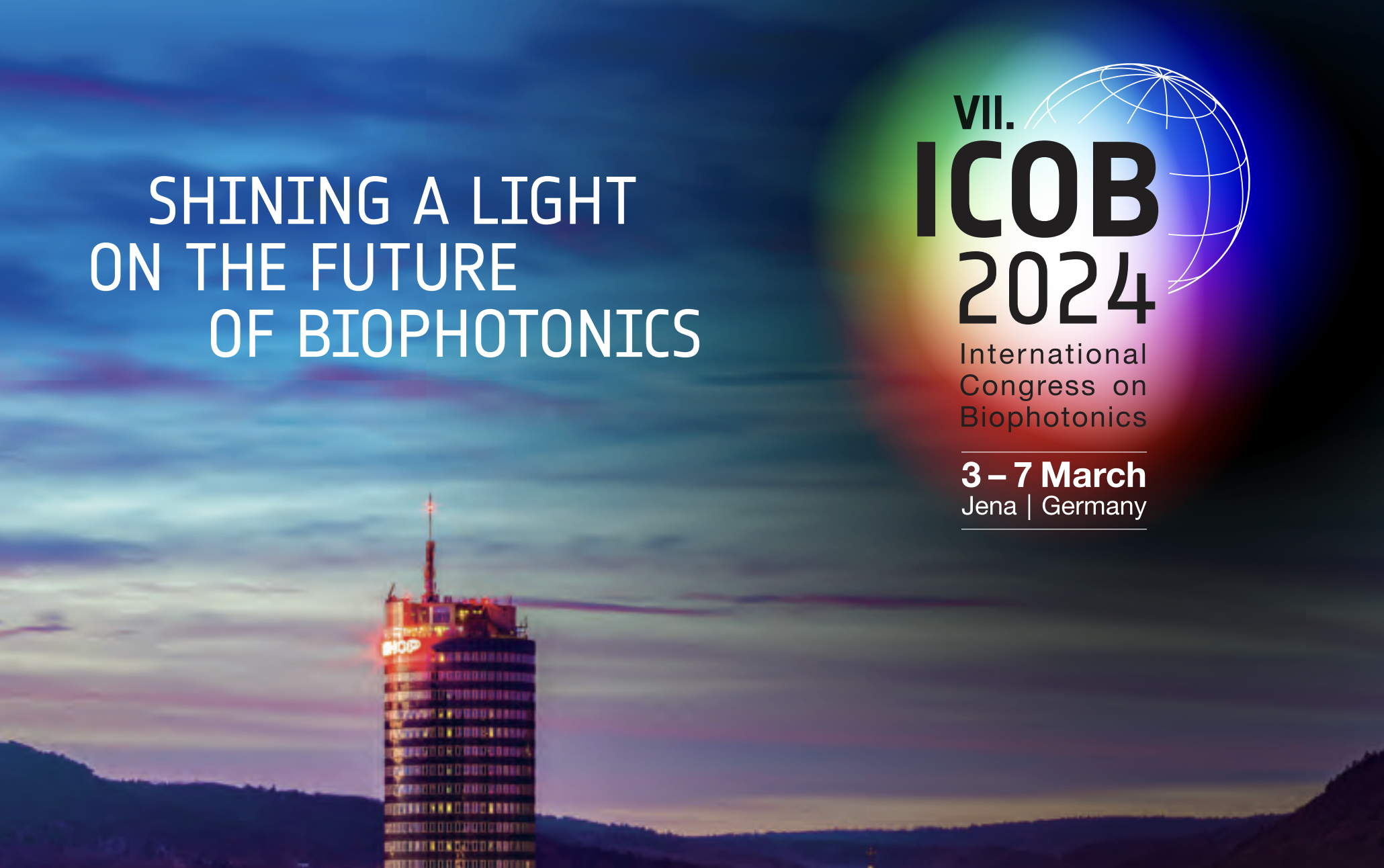Gentle diagnosis of esophageal diseases

Leibniz IPHT scientists develop a catheter that facilitates the examination for patients and provides more information for physicians
Almost everyone knows complaints such as heartburn or belching. 10 to 20 percent of people in the western world suffer from a reflux disease in which acid stomach contents flow back into the oesophagus. In order to find out where the causes lie, patients have to undergo a lengthy and not very pleasant examination. A research team from the Leibniz Institute of Photonic Technology (Leibniz IPHT) in Jena is working on a new diagnostic device that will make this procedure faster, more meaningful and less stressful for patients. In three years’ time, the researchers, together with two Thuringian companies and partners from Florence, plan to present the device, which patients should also be able to use for long-term measurements at home.
In order to find out how the complex interaction of the oesophagus muscles is disturbed, a measuring catheter determines the pressure distribution over the entire length of the oesophagus. With fiber optic sensors, the scientists from Leibniz IPHT engineer high-resolution catheters that are no thicker than 4 millimeters. This simplifies the application and makes the measurement more comfortable for the patient.
In order to simultaneously measure the pressure at many different points of the esophagus and thus be able to analyze the peristaltic movements, the researchers arrange ten to fifteen fiber-optic “strain gages” — so-called fiber Bragg grating sensors — in an optical fiber. Different wavelengths of the individual sensors determine at which points the measurements are carried out. Thanks to additional fiber-optic sensors in the area of the stomach and above, the catheter can simultaneously determine and link pressure, pH and bile values. This enables doctors to gain new insights into the causes of diseases.
The catheter is connected to a handy device, so that patients will be able to use it at home for measurements over a longer period of 24 hours and more. This will enable doctors to detect disorders that occur only occasionally.
“We have already reached a relatively high technology readiness level,” says fiber researcher and technologist Manfred Rothhardt, who coordinates the project and has been researching fiber-optic sensors at Leibniz IPHT for many years. In two years’ time, he and his team plan to present the diagnostic device, which will then be tested on patients for over a year.
For the project entitled Optimo (OPTIcal fiber device for simultaneous manometry, pH-metry and bilimetry in Oesophagus), the research team is working with the companies Jenaer Technische Instrumente (JETI) and Oscomed from Sonneberg as well as with partners from the Italian CNR Institute for Applied Physics in Sesto Fiorentino, the University of Florence and Cecchi Srl, also based there. The German Federal Ministry of Education and Research is funding the research project with approximately 650,000 euros over the next three years as part of the EU “PhotonicSensing” program.
Contact
Related News
Third party cookies & scripts
This site uses cookies. For optimal performance, smooth social media and promotional use, it is recommended that you agree to third party cookies and scripts. This may involve sharing information about your use of the third-party social media, advertising and analytics website.
For more information, see privacy policy and imprint.
Which cookies & scripts and the associated processing of your personal data do you agree with?
You can change your preferences anytime by visiting privacy policy.



